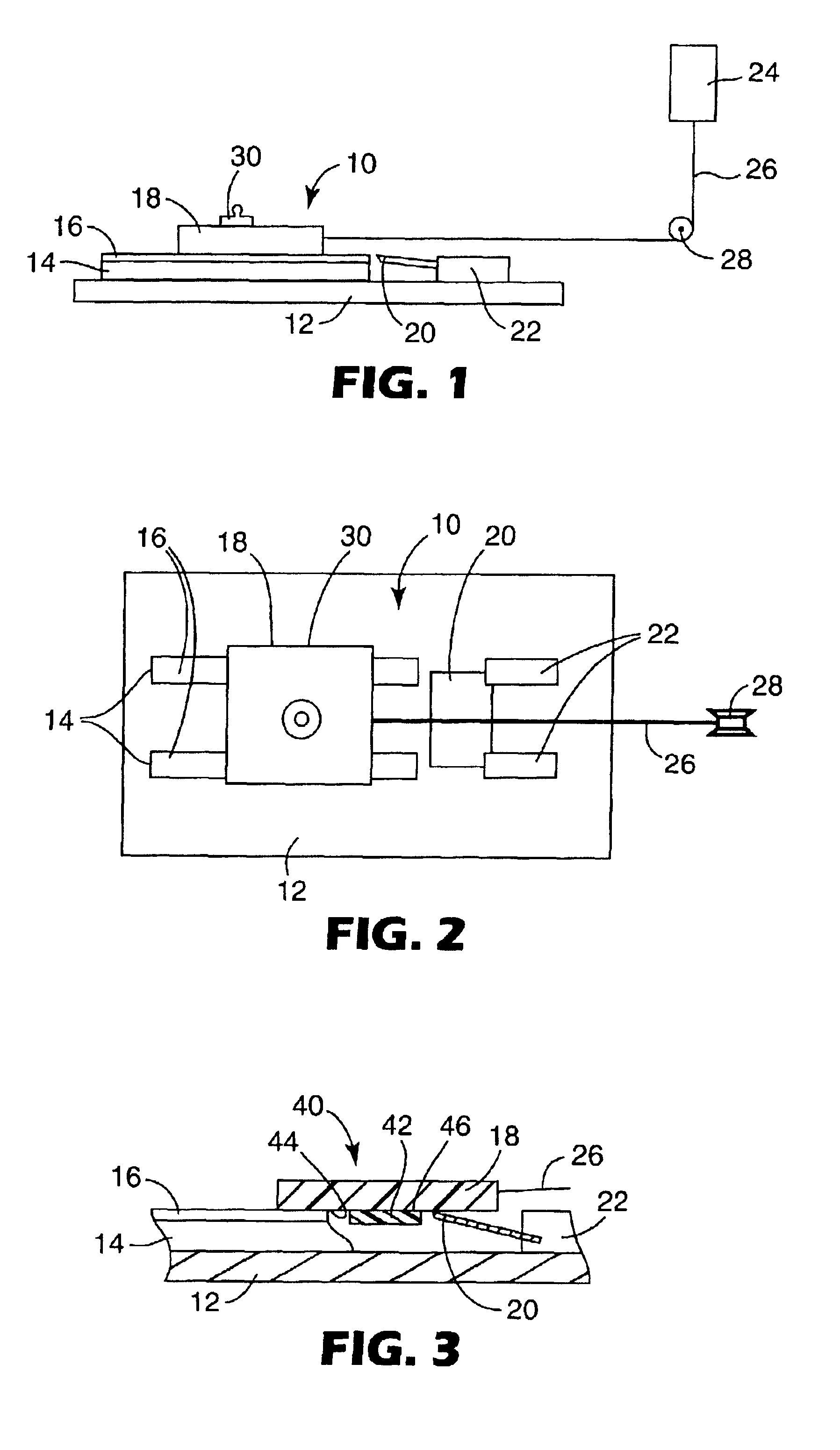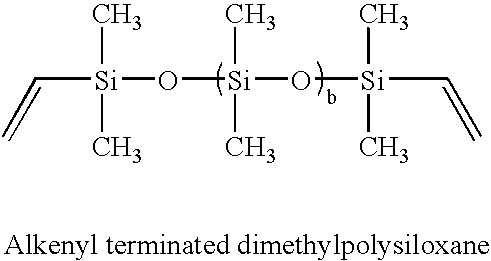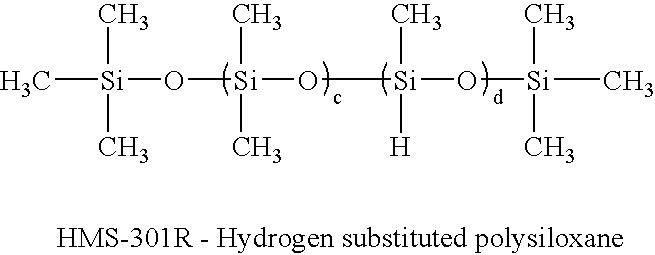Photocured silicone sealant having improved adhesion to plastic
a silicone and plastic resin technology, applied in the field of gelled polymers, can solve the problems of gel mass shrinkage probability, electrical distribution network and telephone communication network are particularly susceptible to erratic changes, network components such as cables and wire connectors may be particularly susceptible to attack, etc., to improve the service life of wire and cable connectors, improve the adhesion to plastic resins, and improve the retention of sealants within the connector body.
- Summary
- Abstract
- Description
- Claims
- Application Information
AI Technical Summary
Benefits of technology
Problems solved by technology
Method used
Image
Examples
example 1 to example 8
Thermally Cured Gel Compositions
[0057]Table 1 provides compositions for curable silicone compositions containing a silicone oil (BAYSILONE fluids M40-M899 available from GE / Bayer Silicones GmbH, Leverkusen, Germany), a vinyl substituted polysiloxane (SILOPREN U65 available from GE / Bayer Silicones, Ekrath, Germany), a hydrogen substituted polysiloxane (HMS-301R available from Gelest Inc., Morrisville, Pa.), an inhibitor (e.g. 1,3,5,7-tetravinyl-,3,5,7-tetramethylcyclotetrasiloxane available from United Chemical Technologies, Inc. (UCT), Bristol, Pa.) and a thermally activated hydrosilation catalyst (Pt(0)-1,3-divinyl-1,1,3,3-tetramethyl disiloxane available from Aldrich Chemical Company Inc., Milwaukee, Wis.). The compositions are essentially duplicates containing about 10 ppm inhibitor and about 2 ppm catalyst. Values of adhesion, measured with reference to polycarbonate, show significant variation from as low as about 0.29 N / 100 mm (8 g / in) to about 3.08 N / 100 mm (80 g / in). Example...
example 9 to example 16
Photocured Sealant Compositions
[0059]Table 2 provides compositions for curable silicone compositions containing a silicone oil (BAYSILONE fluids M40-M899 available from GE / Bayer Silicones GmbH, Leverkusen, Germany), a vinyl substituted polysiloxane (SILOPREN U65 available from GE / Bayer Silicones, Ekrath, Germany), a hydrogen substituted polysiloxane (HMS-301R available from Gelest Inc., Morrisville, Pa.), and a hydrosilation photocatalyst (Photocatalyst E). The compositions include duplicates and change in photocatalyst between about 8 ppm and about 80 ppm. Values of adhesion, measured with reference to polycarbonate, are higher than those obtained with thermally cured viscous sealants and measurements show less variability between about 2.0 N / 100 mm (60 g / in) and about 4.0 N / 100 mm (100 g / in). Photocured silicone compositions show the same trend towards increasing adhesion as the amount of catalyst in the photocurable sealant composition increases. Examples 14-16 provide adhesion r...
example 17 and example 18
Adhesion of Photocured Sealant Compositions to PBT
[0061]Table 3 provides evidence that an increase in adhesion to plastic is not limited to polycarbonate resins but a similar increase occurs when adhesive compositions according to the present invention are photocured in contact with PBT.
[0062]
TABLE 3Adhesion to Polybutylene Terephthalate (PBT)1718Vinyl siloxane wt %14.8%14.8%Hydrogen siloxane wt %1.2%1.2%Silicone Oil wt %84.0%84.0%Inhibitor ppm100 ppmThermal Catalyst ppm 5 ppmPhoto-Catalyst ppm5 ppmAdhesion N / 100 mm (g / in)1.94 (56.5)3.11 (90.5)
PUM
| Property | Measurement | Unit |
|---|---|---|
| Fraction | aaaaa | aaaaa |
| Fraction | aaaaa | aaaaa |
| Time | aaaaa | aaaaa |
Abstract
Description
Claims
Application Information
 Login to View More
Login to View More - R&D
- Intellectual Property
- Life Sciences
- Materials
- Tech Scout
- Unparalleled Data Quality
- Higher Quality Content
- 60% Fewer Hallucinations
Browse by: Latest US Patents, China's latest patents, Technical Efficacy Thesaurus, Application Domain, Technology Topic, Popular Technical Reports.
© 2025 PatSnap. All rights reserved.Legal|Privacy policy|Modern Slavery Act Transparency Statement|Sitemap|About US| Contact US: help@patsnap.com



